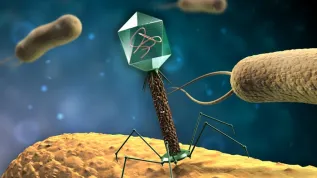
Poles are more likely to be born blonde, go bald and have freckles, according to researchers.
A team of specialists from across Poland analysed over 1,000 genomes to create a database of genetic variants in the population for a project called Our Genomes.
In addition to freckles, blonde hair and male-pattern hair loss, the scientists found that Poles sneeze less often in the sun.
They also revealed that Poles do not have anything in their genome to help process alcohol in the body. In this case, they do not differ much from other Europeans, but they cope with it better than Asians.
Dr. Paulina Dobosz, Director of Scientific Development at Poznań scientific startup MNM Diagnostics said: “It turned out that the structure of the Polish population is homogeneous and continuously coincides with the European population.
“The European subpopulations of GBR (British) and CEU (people of European origin living in the American state of Utah) are closest to the Polish population, which include as much as 98 percent of the examined samples from the Polish population.”
The database will be used primarily by scientists, clinicians and diagnosticians as a reference for the correct interpretation of genetic test results. The populations differ in the frequency of pathogenic alleles, variants of a given gene that cause diseases.
Poles are more likely to suffer from NBS (Nijmegen Breakage Syndrome) and SLOS (Smith Lemli Optiz Syndrome) also known as 7-dehydrocholesterol reductase deficiency, characterized by numerous congenital defects, as well as intellectual disabilities and behavioural problems. SLOS is one of the most common metabolic diseases in Poland.
Dr. Dobosz adds that the data can be used in comparative and epidemiological analyses (how common a given pathogenic variant is in a given population), in genealogical and anthropological analyses and in medical studies.
Dr. Zbigniew J. Król, Deputy Director for Clinical and Scientific Affairs at the Central Clinical Hospital of the Ministry of Interior and Administration in Warsaw, added that the database of genetic variants will be used to analyse which drugs can bring better or worse effects in specific diseases and which of them will be safe for Polish patients.
The project was carried out by the collaboration of the Central Clinical Hospital of the Ministry of Interior and Administration in Warsaw and the Poznań scientific startup MNM Diagnostics.
(PAP)
Author: Urszula Kaczorowska
uka/ agt/ kap/
tr. RL













